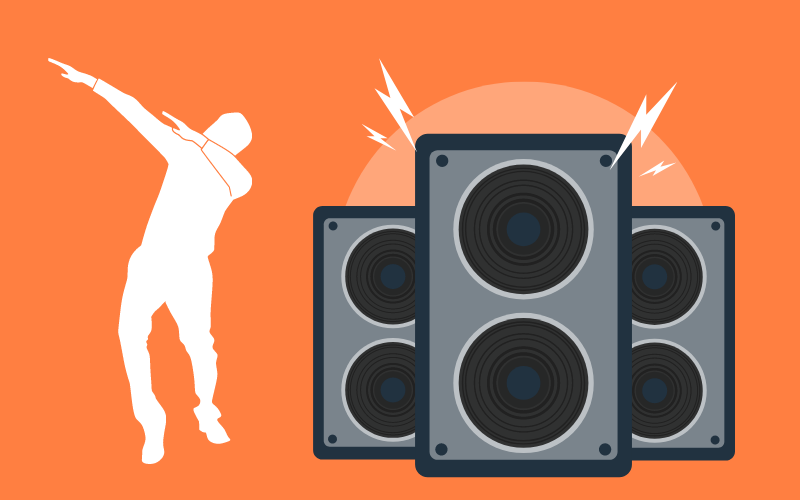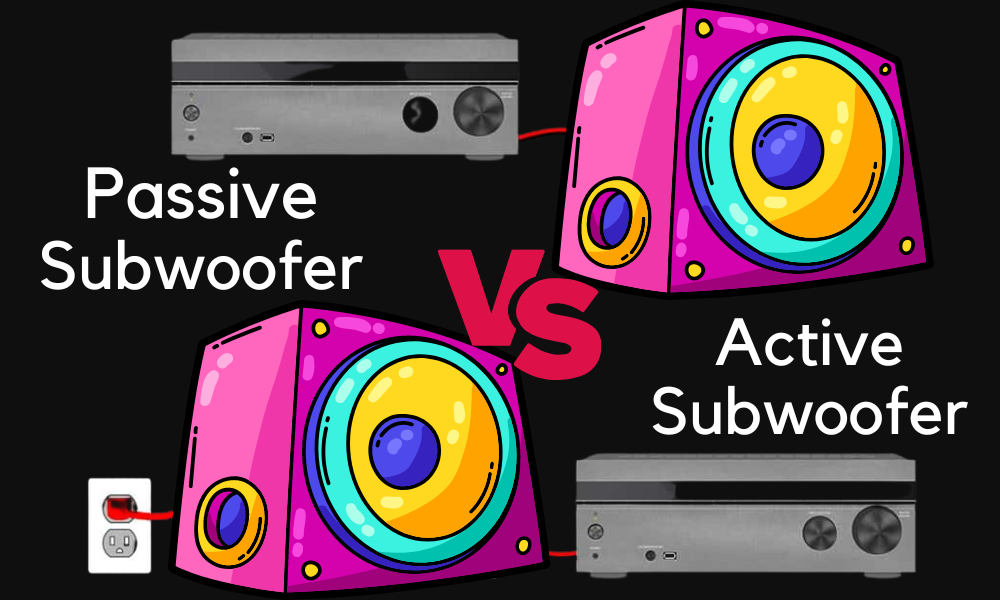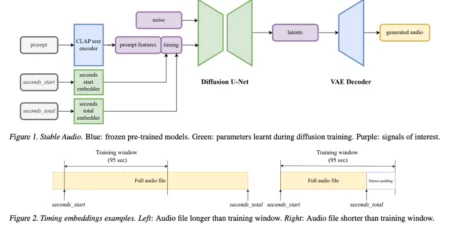You will need a subwoofer to add serious bass to your music setup. But not just any subwoofer – you’ll need to decide if you want a passive or active subwoofer.
A passive subwoofer is a subwoofer that relies on an external amplifier to power it. On the other hand, active subwoofers have an internal amplifier. So, which is better? Find out more in the information discussed below.
What is a Subwoofer?
A subwoofer is an acoustic device that enhances the bass frequencies in a speaker system. Subwoofers are typically smaller and lower-powered than regular speakers, so they work best when paired with larger, more powerful speakers.

They are used in various audio applications, including home theater, car, and PA systems.
- In a home theater system, subwoofers supplement the main speakers’ low-frequency response, providing an immersive, theater-like experience.
- In a car audio system, subwoofers improve the system’s overall sound quality and provide a more dynamic listening experience.
- PA systems often use subwoofers to provide a tight, punchy bass sound. There is more than one subwoofer type active vs passive.
What is the Difference between Active vs Passive Subwoofer?
Passive subwoofers are designed to produce lower frequencies than active subwoofers, which means they’re better suited for low-pitch music.
These subwoofers use a smaller amplifier and much less power than active subwoofers so they can be placed more discreetly.
While active subwoofers are typically louder and have a better bass response than passive subwoofers, they can also be more expensive. Choosing the right subwoofer for your needs is essential to get the best sound possible.

Factors to Consider
Here are some factors to consider when deciding whether an active or passive subwoofer is best for your home theater setup:
Budget Range:
Active subs tend to be pricier than passive ones, but they may be worth it if you want a better bass response.
Setup Space:
Passive subwoofer home theaters can be smaller and more portable than active ones, but they may produce less sound overall.
Room Acoustics:
In passive Vs powered subwoofers, passive ones can reproduce lower frequencies more accurately, but they may not be as loud in spaces with poor acoustic properties.
Which one is better for your needs?
Subwoofers are essential equipment in any audio system and play a massive role in the overall sound quality. So, active vs passive subwoofer which is better for your needs?
The answer is that both have their pros and cons. A passive subwoofer relies on external amplification to produce sound, whereas an active subwoofer is powered by a separate amp and speakers.
Active subwoofers typically offer superior low-frequency performance, but they can be more expensive and require additional installation hardware.
Ultimately, it depends on your specific needs and preferences for the best one. An active subwoofer is the best option if you’re looking for superior low-frequency performance.
However, a passive subwoofer might be a better choice if money isn’t a significant concern and you are okay with adding some extra installation work.
Pros & Cons of a Passive Subwoofer
Passive subwoofers use a built-in amplifier and speaker drivers to produce sound. Here are some benefits and drawbacks of Passive Subwoofers:
Pros:
- Passive subs tend to be more affordable than active subs.
- They can be more easily placed in areas where sound quality is important but space is tight, like corners or near the wall.
- Because they don’t require an external power supply, passive subs are portable, so you can take them wherever you go.
- They’re usually louder than active subs, so you can lower the volume on your audio player or TV without sacrificing sound quality.
- Passive subwoofer to receivers typically has a longer lifespan than active subs because they don’t require regular maintenance.
Cons:
- Because they use a built-in amplifier and speaker drivers, passive subwoofers are less powerful than active subs. It means they won’t handle loud sounds as well as active subwoofers will.
- If your room isn’t well-insulated, passive subs may produce loud sound waves that travel through the walls and disturb your neighbors.
Pros & Cons of an Active Subwoofer
Both types of subwoofers have pros and cons, but for the average person, an active one will likely be better. An active subwoofer uses electronic controls to output more power and produces deeper bass than a passive unit.
Positives:
- Active subs are more powerful than passive subs and can produce deeper bass sounds.
- They usually require an external power supply, which makes them more difficult to portable.
- Active subs can be louder than passive subs, which means you can raise the volume on your audio player or TV without sacrificing sound quality.
Negatives:
- Active subs can be more expensive than passive subs.
- They can be harder to place in areas where sound quality is essential, but space is tight, like corners or near the wall.
- Active subwoofers are usually louder than passive ones, which can be overwhelming if you have a small room or listening area.
Passive and active subwoofers have pros and cons, depending on your specific needs and preferences. Active subs can be more expensive and require additional hardware, while passive subs are usually less powerful but more portable.
Summarized Note
A passive radiator is a loudspeaker driver similar to a conventional woofer but without adding a magnet and voice coil assembly. Instead, the passive radiator uses a stiff paper or metal cone attached to a suspension, similar to a regular woofer.
Yes, you can use a passive subwoofer with a home theater receiver. However, you must ensure that the home theater receiver has an output compatible with the passive subwoofer.
Active subwoofers are generally better than passive subwoofers because they are more powerful and easier to control.
When choosing a subwoofer, you must consider the size of the room, the type of music or movies you enjoy, and your budget. It is also essential to consider the subwoofer’s power rating, frequency response, and sensitivity.





